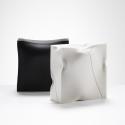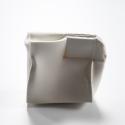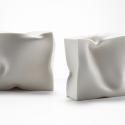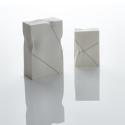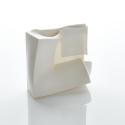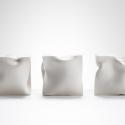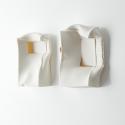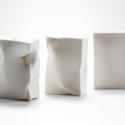Discipline
Abstract
Material
Ceramic/Clay
Region
London
Biography
BIOGRAPHY
Born in Rio de Janeiro, Brazil, Elizabeth studied Economics and followed a successful career in business and marketing.
She began experimenting with ceramics after having a family, following a life-long desire to work with her hands. Her passion for ceramics developed at Greenwich House Pottery in New York, where she lived with her family for 10 years.
Elizabeth’s determination to pursue a career in ceramics was made possible after a move to London in 2013, where she took a two-year Diploma course at City Lit, graduating in 2019.
Her graduation work ‘Squares’ was shortlisted for Fresh and exhibited in the British Ceramics Biennial in Stoke-On-Trent in 2019.
Aiming to develop her practice, she pursued a Ceramics & Glass MA at The Royal College of Art from where she graduated in 2022.
STATEMENT
Elizabeth was drawn to clay because of its malleability. It is a medium that allows her to work instinctively and intuitively. She is fascinated by clay’s potential to convey tension and conflict.
Elizabeth’s work speaks of self-acceptance. It confronts and questions expectations of perfection and the liberating emotions of embracing who we are and our limitations.
Her work Release draws upon her childhood trauma and the internal dilemma of wanting to be herself but needing to submit to her parents’ expectations.
Her sculptural ceramic forms express the conflict between conformity and independence, by suggesting internal pressures that reveal the tensions created between the desire to individuate and the need to comply with what is expected of you.
The work illustrates this transformation, the constant ebb and flow of relinquishing control and breaking from rigidity to allow a more fluid and flexible identity. In so doing, it discloses and embraces imperfections which would usually be hidden or discarded.
Pure white sculptures in Parian clay, distinguished by its satin sheen, reference notions of porcelain’s elegance and the confines of tradition it entails. By gently distorting a perfect geometrical shape Elizabeth transforms its rigid structure to allow an asymmetric aesthetic that conveys movement, fluidity, and change. This process culminates in a point of rupture – liberation – expressed by embracing the beauty of shattered edges and accentuating the stress cracks with fine silver.
Elements of rigidity harmoniously coexist with the sensuality of curves and signs of rupture, in a balance between conformity and liberation.
